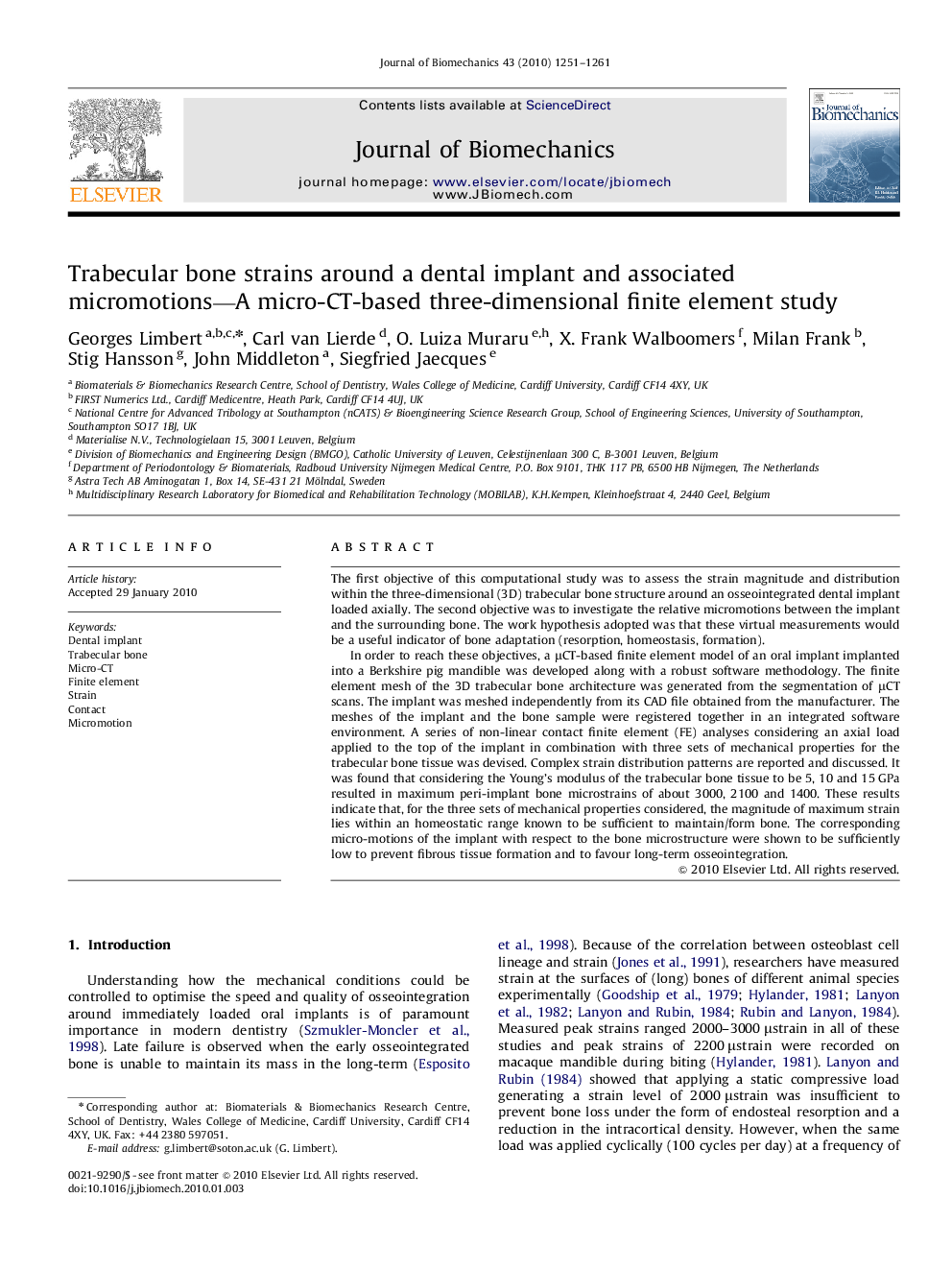| کد مقاله | کد نشریه | سال انتشار | مقاله انگلیسی | نسخه تمام متن |
|---|---|---|---|---|
| 873654 | 910314 | 2010 | 11 صفحه PDF | دانلود رایگان |

The first objective of this computational study was to assess the strain magnitude and distribution within the three-dimensional (3D) trabecular bone structure around an osseointegrated dental implant loaded axially. The second objective was to investigate the relative micromotions between the implant and the surrounding bone. The work hypothesis adopted was that these virtual measurements would be a useful indicator of bone adaptation (resorption, homeostasis, formation).In order to reach these objectives, a μCT-based finite element model of an oral implant implanted into a Berkshire pig mandible was developed along with a robust software methodology. The finite element mesh of the 3D trabecular bone architecture was generated from the segmentation of μCT scans. The implant was meshed independently from its CAD file obtained from the manufacturer. The meshes of the implant and the bone sample were registered together in an integrated software environment. A series of non-linear contact finite element (FE) analyses considering an axial load applied to the top of the implant in combination with three sets of mechanical properties for the trabecular bone tissue was devised. Complex strain distribution patterns are reported and discussed. It was found that considering the Young’s modulus of the trabecular bone tissue to be 5, 10 and 15 GPa resulted in maximum peri-implant bone microstrains of about 3000, 2100 and 1400. These results indicate that, for the three sets of mechanical properties considered, the magnitude of maximum strain lies within an homeostatic range known to be sufficient to maintain/form bone. The corresponding micro-motions of the implant with respect to the bone microstructure were shown to be sufficiently low to prevent fibrous tissue formation and to favour long-term osseointegration.
Journal: Journal of Biomechanics - Volume 43, Issue 7, 7 May 2010, Pages 1251–1261